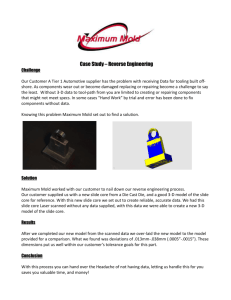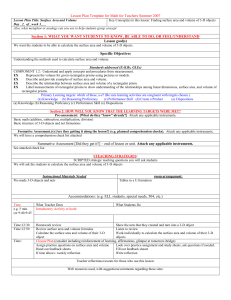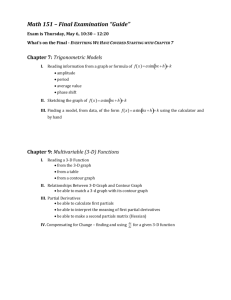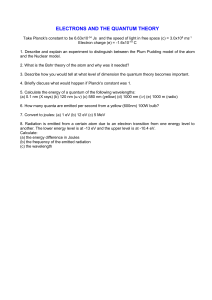Dense Maps of Estuarine Flow Vectors Measured from the Air
advertisement
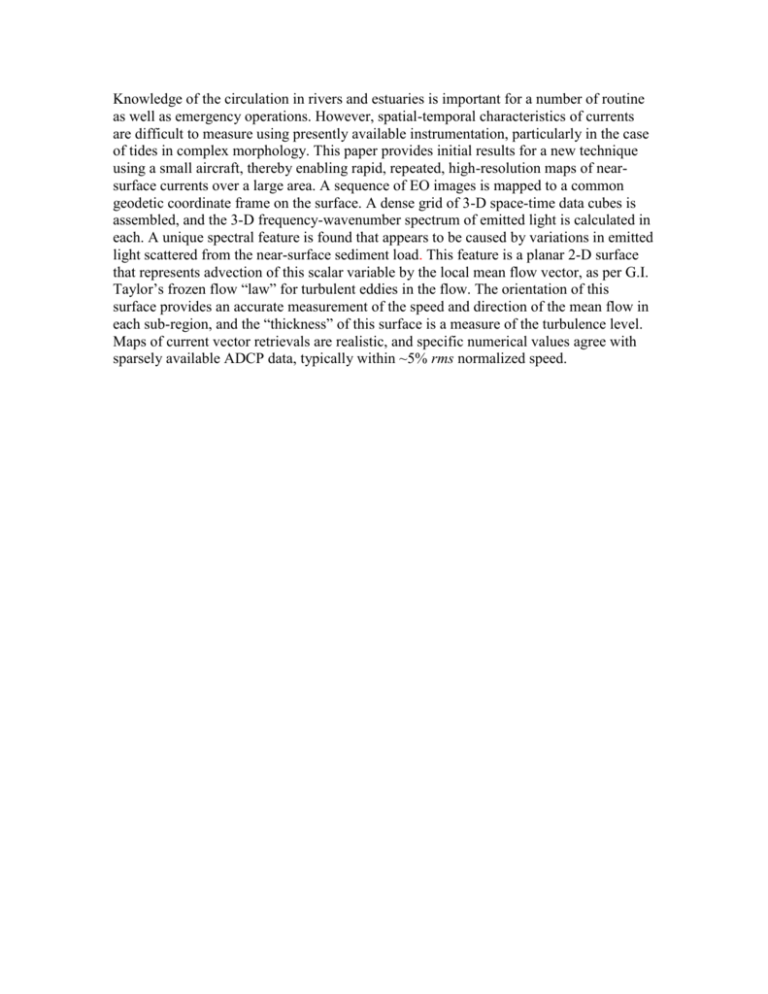
Knowledge of the circulation in rivers and estuaries is important for a number of routine as well as emergency operations. However, spatial-temporal characteristics of currents are difficult to measure using presently available instrumentation, particularly in the case of tides in complex morphology. This paper provides initial results for a new technique using a small aircraft, thereby enabling rapid, repeated, high-resolution maps of nearsurface currents over a large area. A sequence of EO images is mapped to a common geodetic coordinate frame on the surface. A dense grid of 3-D space-time data cubes is assembled, and the 3-D frequency-wavenumber spectrum of emitted light is calculated in each. A unique spectral feature is found that appears to be caused by variations in emitted light scattered from the near-surface sediment load. This feature is a planar 2-D surface that represents advection of this scalar variable by the local mean flow vector, as per G.I. Taylor’s frozen flow “law” for turbulent eddies in the flow. The orientation of this surface provides an accurate measurement of the speed and direction of the mean flow in each sub-region, and the “thickness” of this surface is a measure of the turbulence level. Maps of current vector retrievals are realistic, and specific numerical values agree with sparsely available ADCP data, typically within ~5% rms normalized speed.


